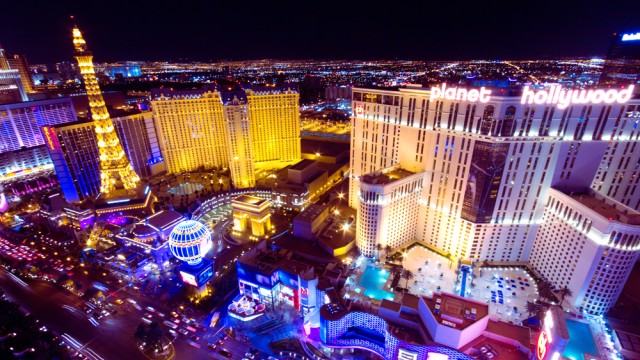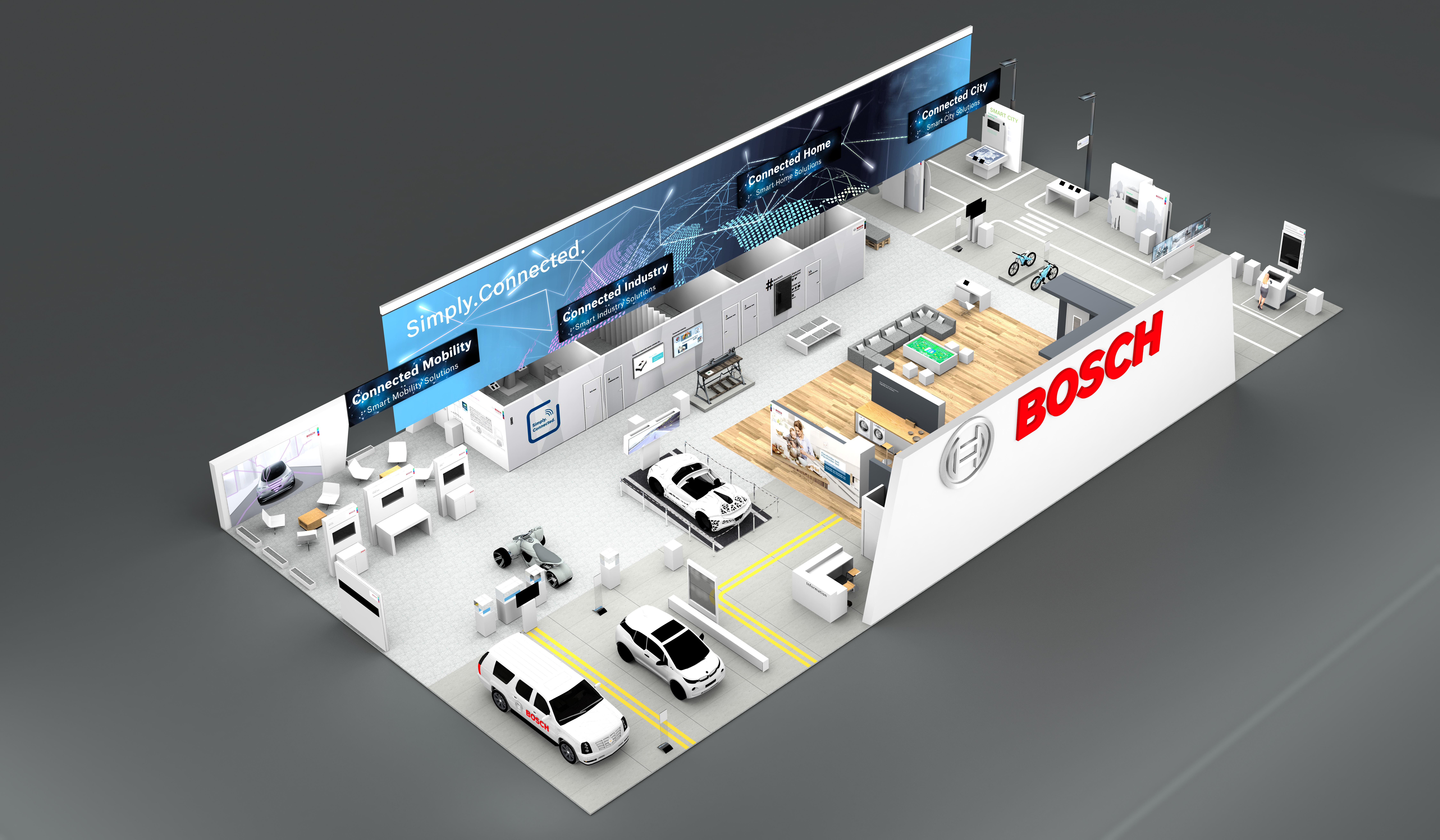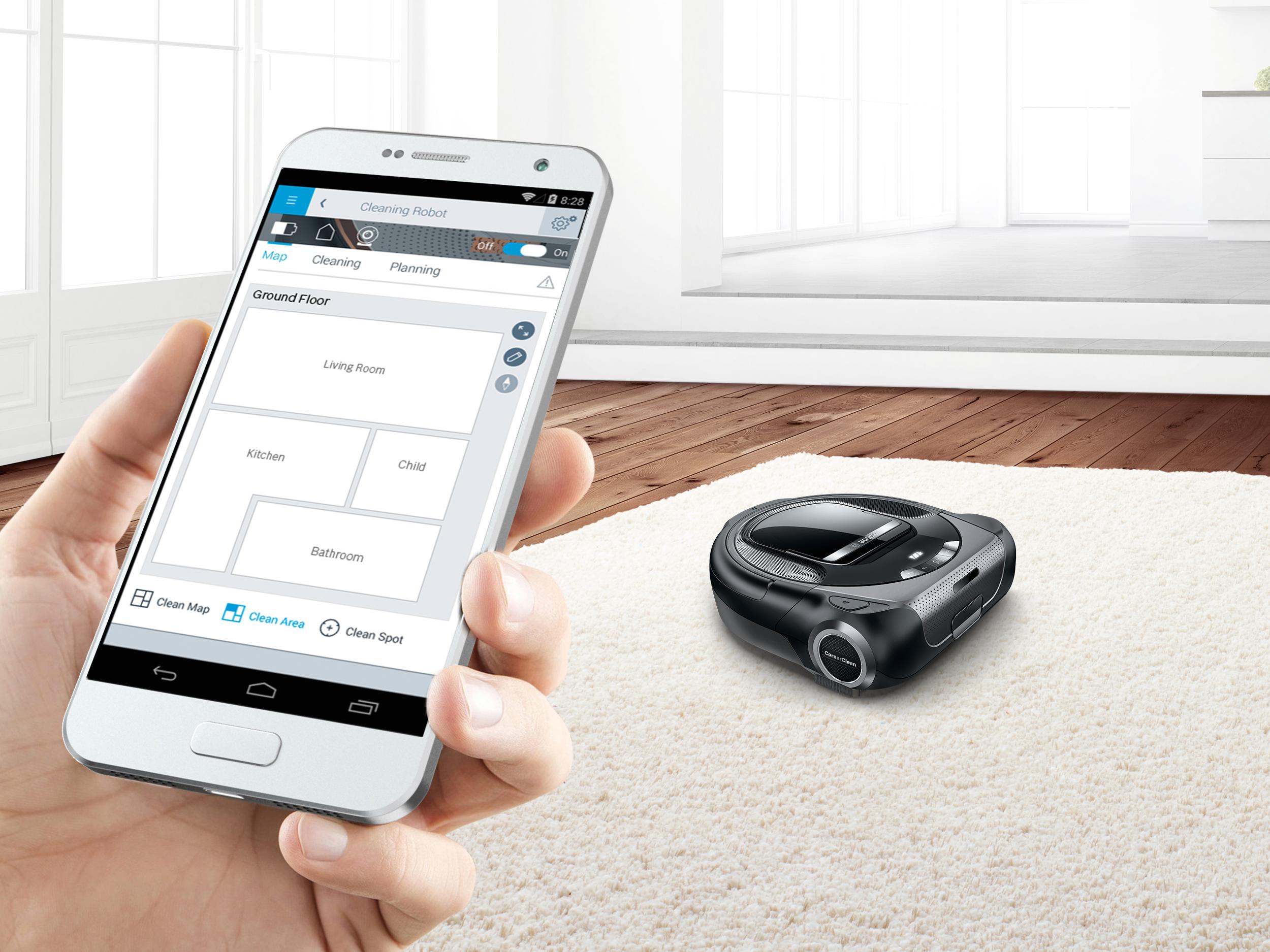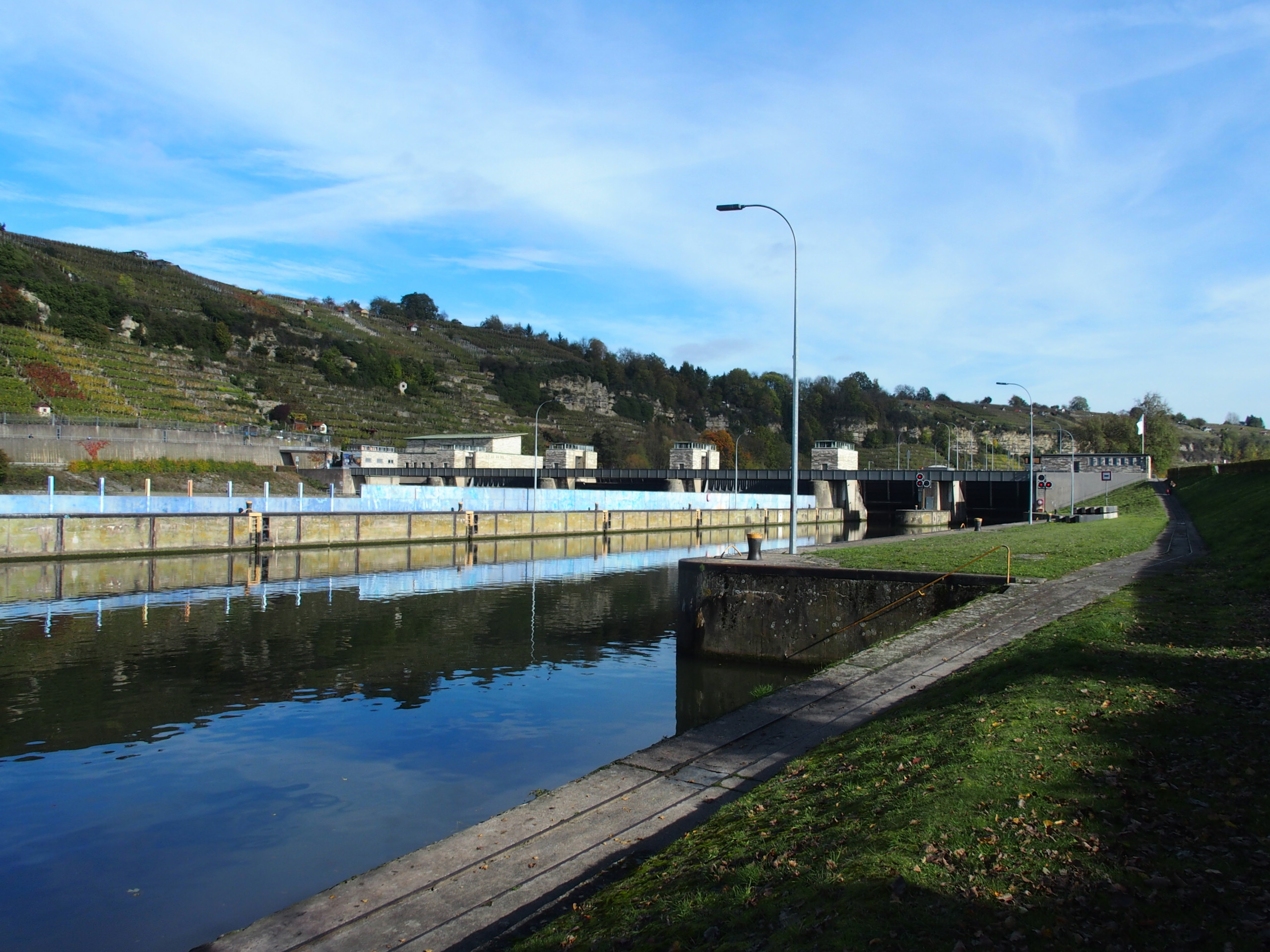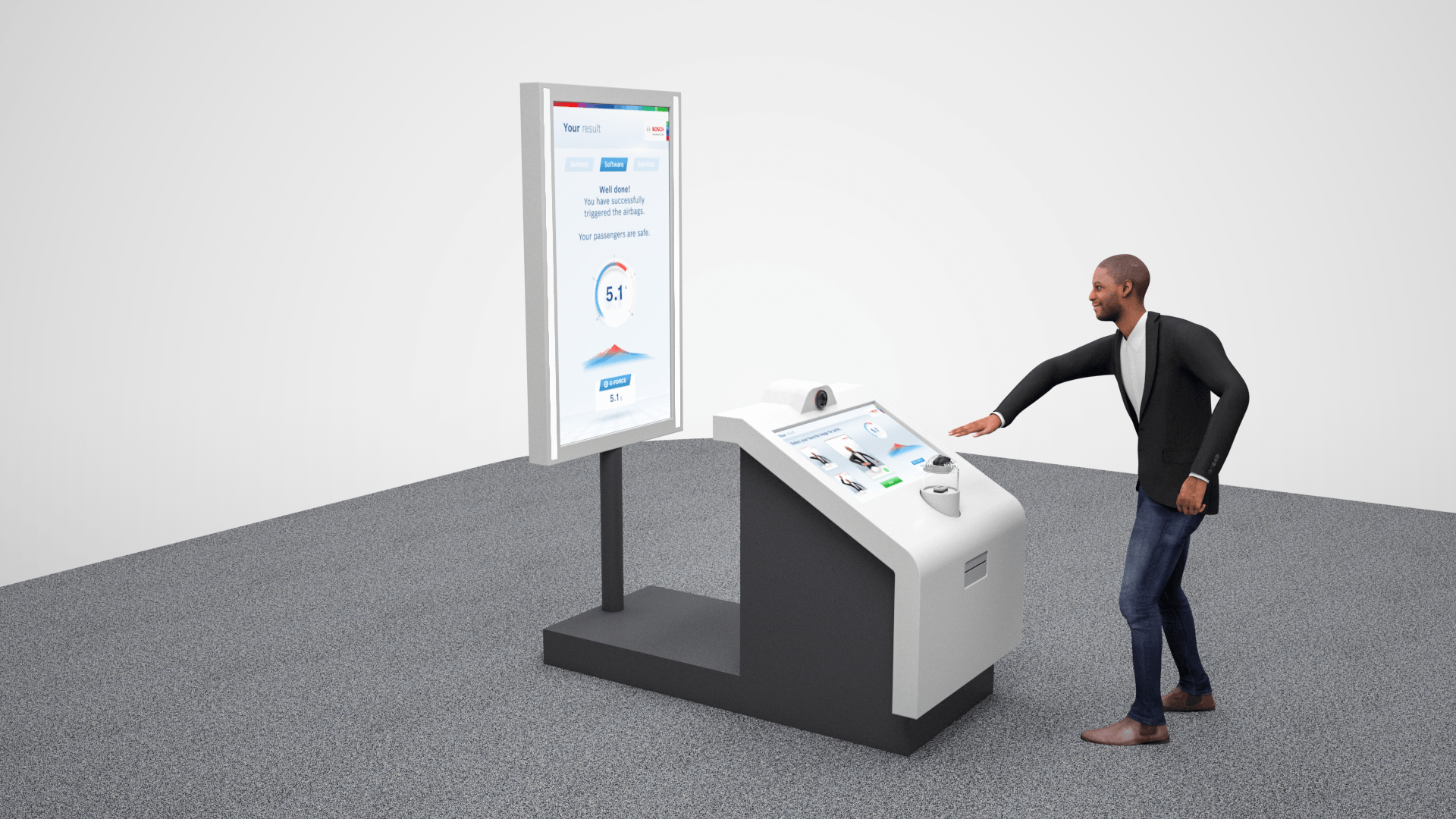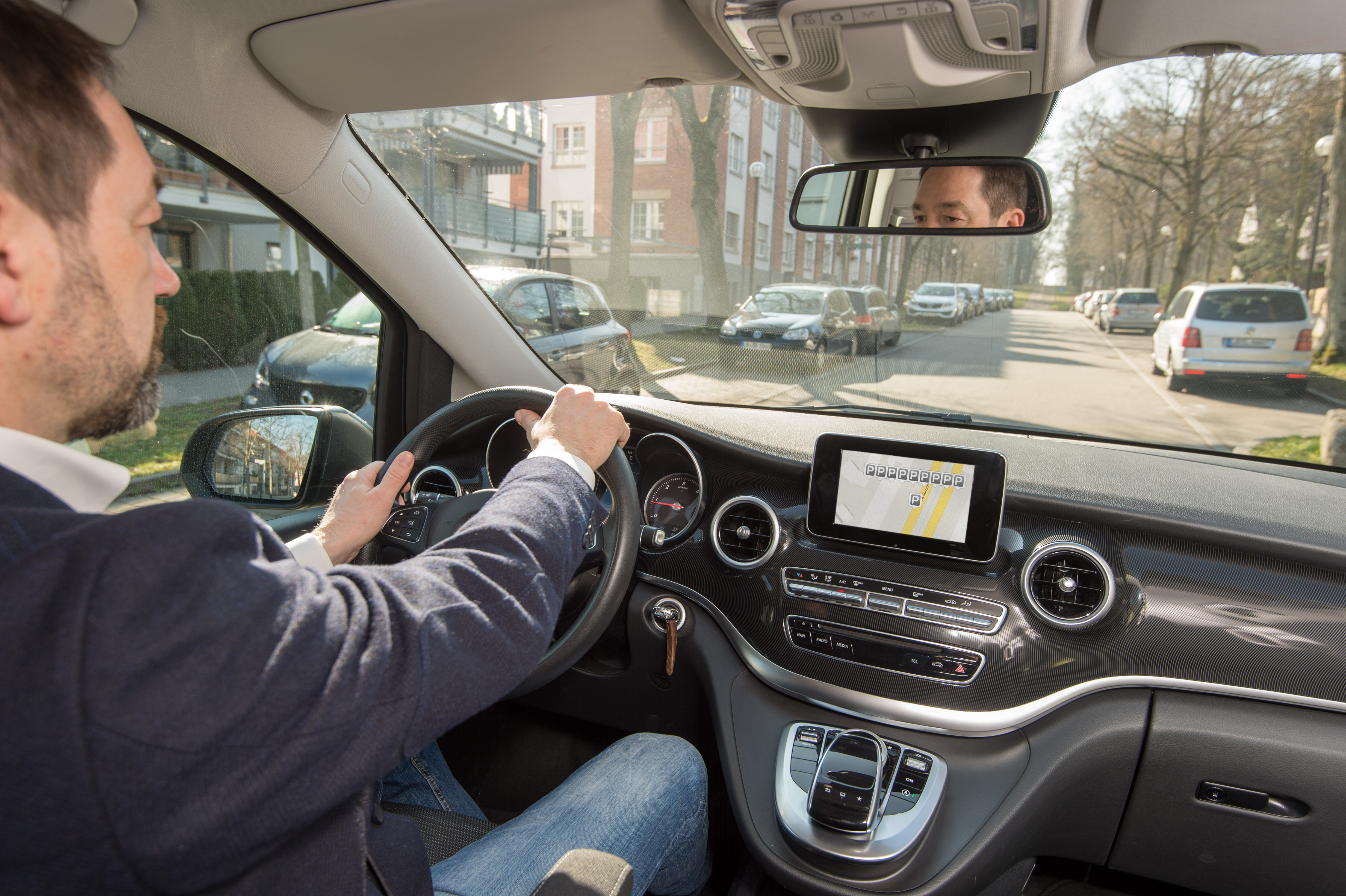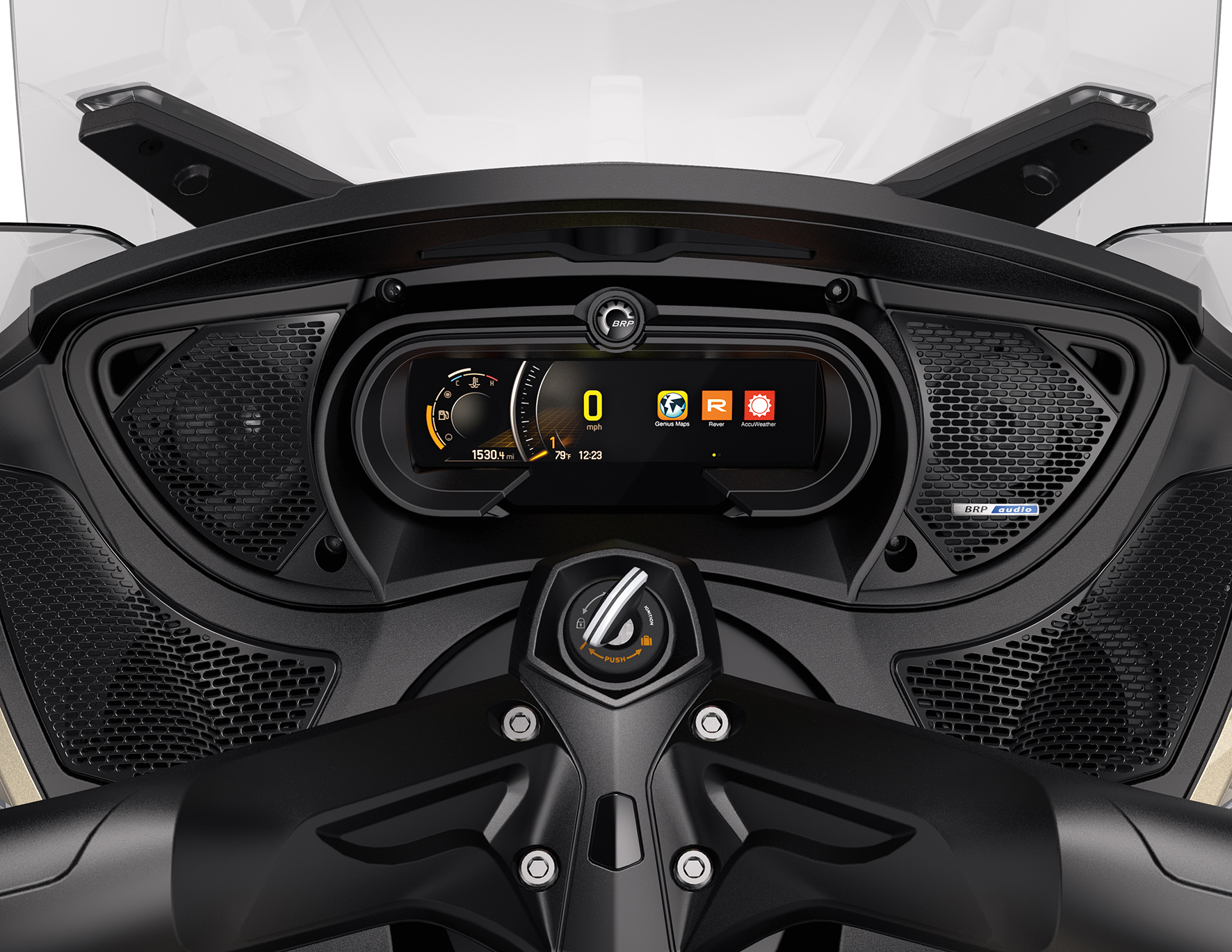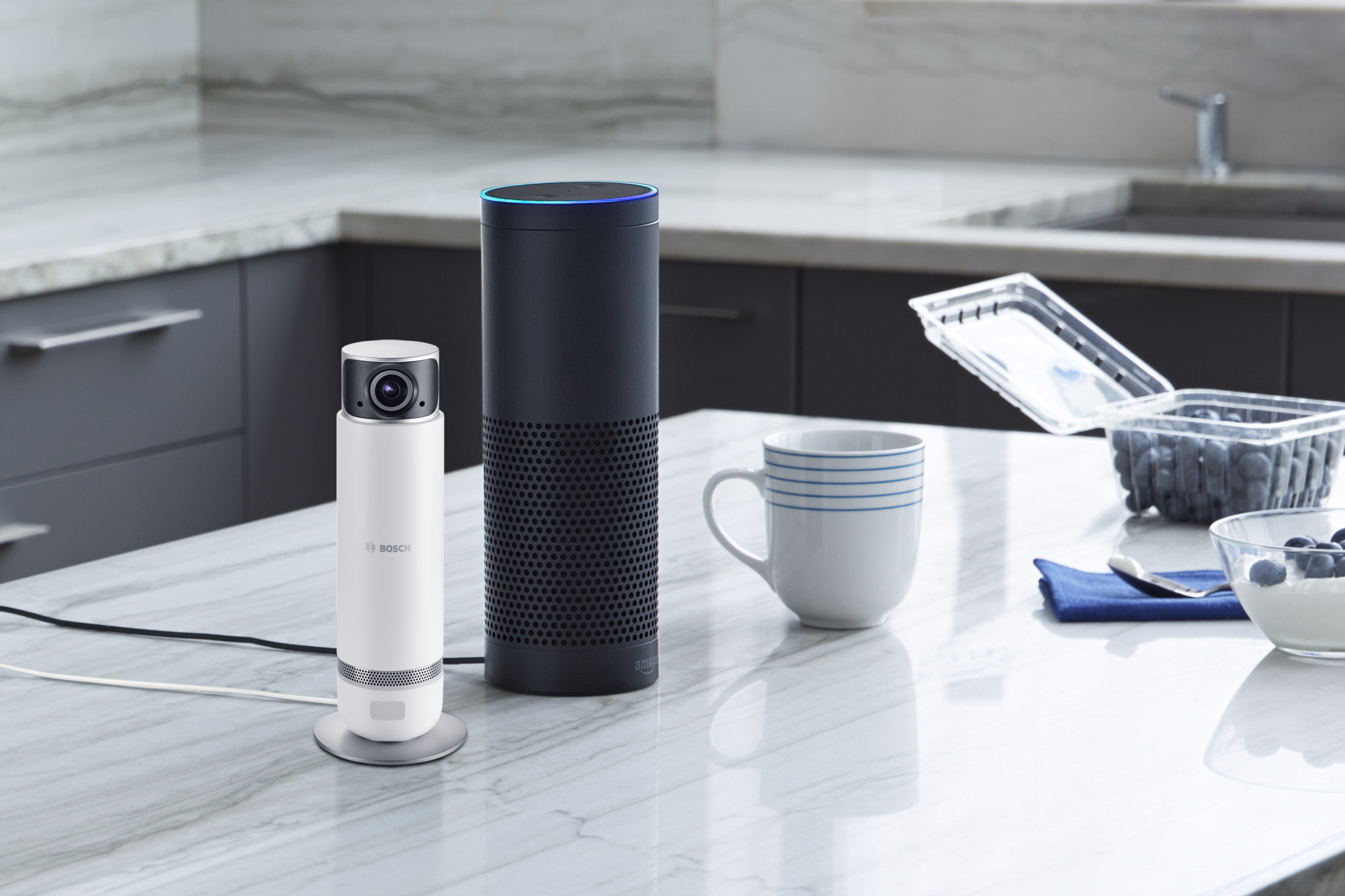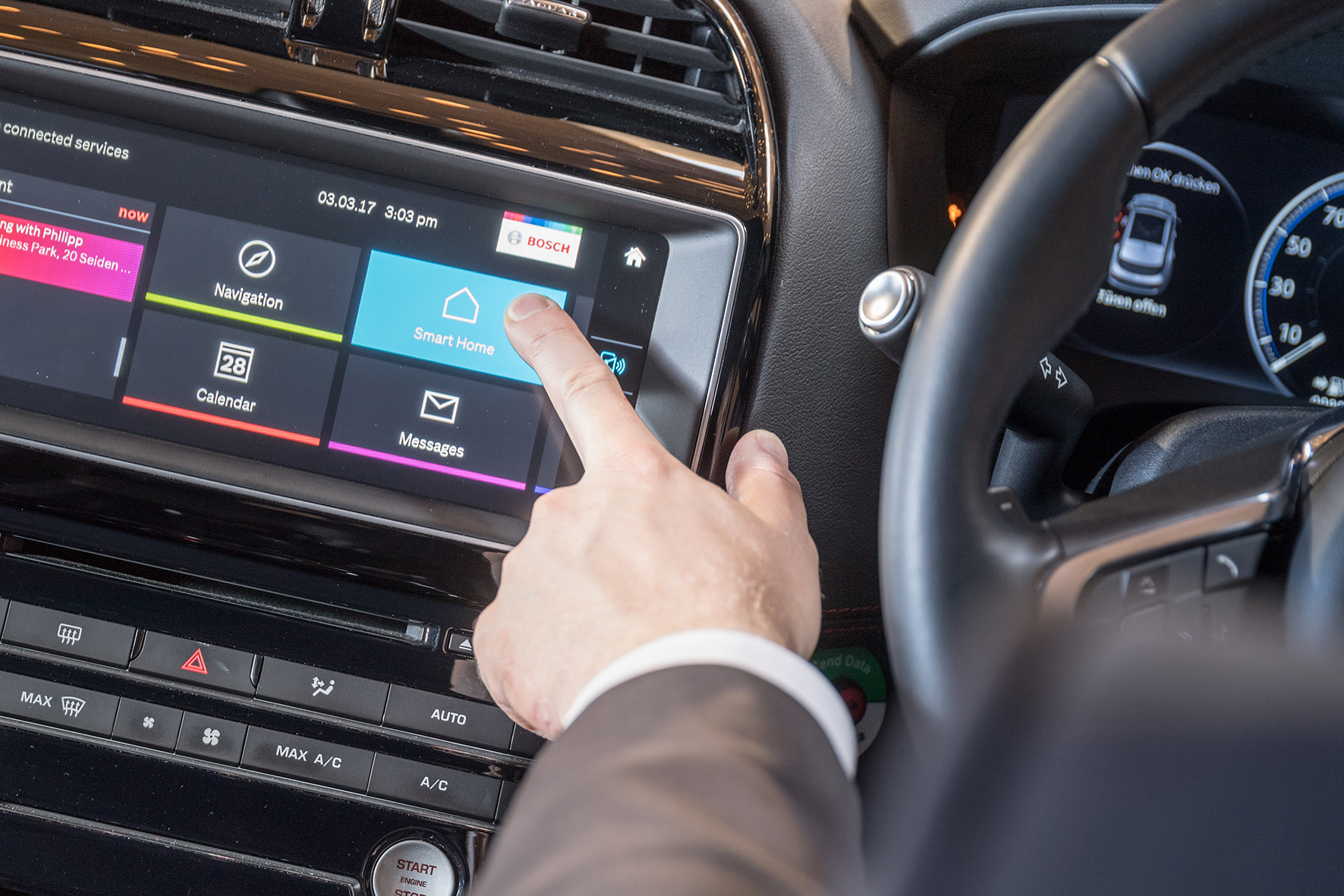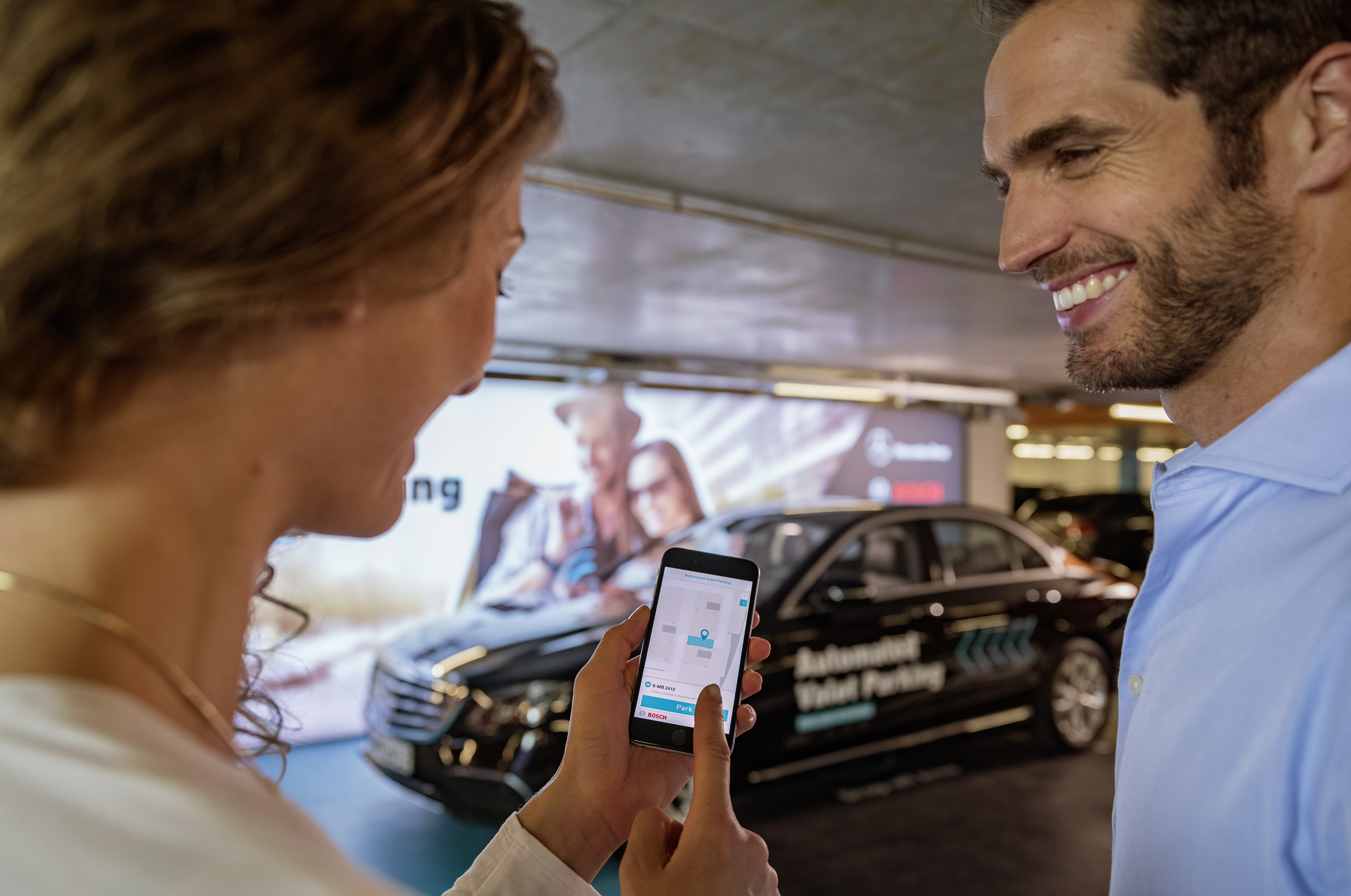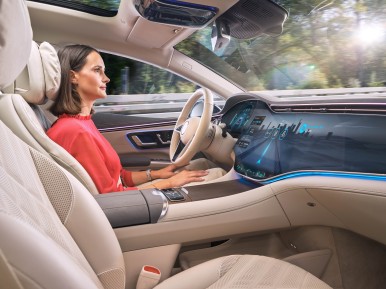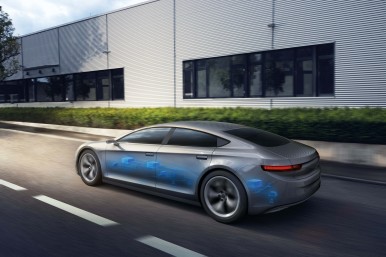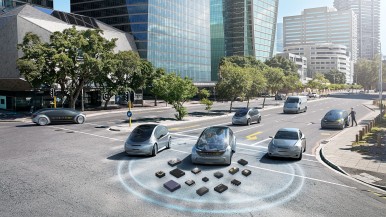Solutions for connected cities: safety, energy efficiency, reduced stress
Taking the hassle out of parking: Bosch will be presenting various solutions for connected and automated parking. Community-based parking enables drivers to find what has become a rarity in residential areas and city centers: an empty parking space. As they drive by, cars automatically recognize and measure the size of the gaps between parked cars, transmitting the data in real time to a digital parking-space map that enables drivers to locate vacant parking spaces. Automated valet parking from Bosch goes one step further – the car parks itself without any action needed on the driver’s part. Drivers leave their vehicle at the entrance to the parking garage and send a corresponding command from a smartphone app: the car then searches for a vacant spot on its own and parks there without assistance. One factor making fully automated parking a reality is smart parking-garage infrastructure, which connects with the vehicle’s on-board software.
Intelligent power supply with DC microgrids: Microgrids are relatively small, independently controlled energy-management systems that can power large buildings. Their ability to run on both traditional and renewable fuels means they have excellent environmental credentials. Another major advantage of microgrids is their self-sufficiency, which makes them a reliable source of power when a weather- or security-related outage affects the broader grid. Unlike conventional systems, Bosch microgrids run on direct current (DC) instead of alternating current (AC), enabling energy savings of up to ten percent. The Bosch DC microgrid was developed in the U.S. as part of a strategic project to develop new business opportunities for the company in a startup environment. As early as 2015, Bosch outfitted an existing facility at Fort Bragg, North Carolina, with a smart-building microgrid solution which supplies less expensive, more eco-friendly electricity.
Early warning about flooding: This system offers early warning about potential flooding by digitally monitoring the levels of rivers and other bodies of water close to cities in real time. Up to now, water levels have always been measured by mechanical means. It can take hours until the data is available for third parties. Bosch is currently testing the flood monitoring system in a pilot project on the Neckar river in Ludwigsburg, Germany. There, ultrasonic sensor probes and cameras track changes in water level, water velocity, and rate of discharge. This data is sent to the Bosch IoT Cloud for assessment. When critical thresholds are exceeded, advance alerts are sent by SMS to the affected municipalities, residents, and business owners. This gives them enough time to take precautions against flooding or flood damage. A number of flood-prone municipalities in India and South America have already expressed interest in the solution.
Vivatar app – a digital guardian angel: Going jogging in the dark, or heading home on foot after the last bus has already left is enough to make anyone feel uneasy. This is where the Bosch Vivatar app comes in. People can use it to contact friends and family and be digitally “escorted” home via GPS. Users decide for themselves when they should be accompanied and by whom. The Premium version of Vivatar grants users 24/7 access to the Bosch Emergency Assistant, a professionally trained emergency team.
Bosch start-ups are developing solutions for smart cities: Bosch wants to tap new fields of business quickly with its in-house start-up platform. At the same time, the innovative start-ups using it benefit from the infrastructure provided and from the long-standing experience of a supplier of technology and services such as Bosch. At CES 2018, two start-ups from the platform will be presenting their connected-city solutions. One of these is the MyScotty app, which allows users to access as well as pay for local shared mobility services from different providers. A single sign-on is enough to gain permanent access to thousands of cars, bicycles, and scooters. This means far fewer apps are needed. MyScotty debuted in Germany mid-2017, and other countries are set to follow. Another solution, the smart mobility center BePart, is still in the development phase. It is designed to enable cities and towns to avoid congestion by diverting traffic during rush hour. Commuters can receive recommendations in real time from the municipal authorities and adjust their routes accordingly. The goal is to improve air quality in conurbations. Initial pilot projects will run in one or two cities in Germany in 2018.
The new mobility of the future: smart, secure, stress-free urban travel
Next-generation cockpit: Bosch delivers a futuristic cockpit for the next generation of motor vehicles. Visitors to CES 2018 can experience an end-to-end display and control concept live in a demonstration vehicle based on a Cadillac Escalade. With its five interconnected displays, the interface between the driver and the vehicle (HMI) makes driving a safer and less stressful experience, and allows drivers to concentrate better on the traffic situation. A cockpit camera and voice-recognition software recognize the driver and automatically load not only their personal settings for the seat and mirrors, but also their favorite playlists. Without having to take their eyes off the road, drivers can operate the infotainment, navigation, and air-conditioning systems either via voice control or a touchscreen with haptic feedback.
Bosch will present mobility services for connected vehicles in a new concept car based on the BMW i3. As the number of connected vehicles grows – according to Gartner, around 250 million cars will be connected worldwide by 2020 – so too does the potential for new digital services. Bosch offers a wide array of vehicle services that can help drivers find a free charge spot or parking space with a minimum of fuss. Other services include wrong-way driver alert and automatic activation of an emergency call after an accident.
Future mobility: Bosch’s connected show car encapsulates the future of mobility. The show car is always online, and connected to its surroundings as well as the owner’s smart home. This connectivity allows drivers to reserve the nearest e-bike or close the windows at home if it starts to rain – tapping or swiping the screen is all it takes.
Convenient use of apps on motorcycles and other two-wheelers: With its mySPIN smartphone integration solution, Bosch makes it possible for riders to easily access advanced functionalities such as navigation, personal audio, and weather on their smartphones, even while riding their vehicles. Already available for cars since 2014, mySPIN has now been optimized for two-wheelers and powersports vehicles. At CES 2018, Bosch is demonstrating mySPIN on an on-road vehicle from BRP: a Can-Am® Spyder® F3 Limited.
Connected heavy trucks for optimized logistics: Together with Daimler Trucks and Fleetboard, Bosch has developed a common telematics platform, which fleet managers can use to monitor the technical status of their vehicle components. It warns them of possible breakdowns before they happen, helping avoid unplanned repairs, optimize scheduled repair shop visits, and increase the reliability of deliveries. Bosch’s pioneering telematics solution for smart heavy trucks received the CES 2018 Innovation Award in the Tech For A Better World category.
Alerts in critical situations through vehicle-to-x communication: A traffic jam beyond the crest of a hill or a vehicle entering suddenly from a hidden side road: when vehicles communicate with each other and their surroundings, they send warnings of critical situations like these – and make driving safer and less stressful. Bosch’s new CCU connectivity control unit is an on-board unit that regulates vehicle-to-x (vehicle-to-everything) communication. The vehicle-to-x CCU is compatible with all current communication standards such as wifi, LTE, or DSRC, and can be deployed anywhere in the world.
Securing connected vehicles: The IDPS intrusion detection and prevention system developed by Escrypt, a Bosch subsidiary, uses dedicated security software to recognize and analyze potential attacks on connected vehicles, allowing effective countermeasures to be taken rapidly to protect individual vehicles or an entire fleet. Escrypt, a security specialist, will also be debuting a data-security solution for vehicle-to-x communication at CES 2018.
Smart homes rely on sensor technology and software
Roxxter robotic vacuum cleaner with artificial intelligence: Bosch is a pioneer when it comes to kitchen connectivity. Last year, the company rounded out its portfolio of web-enabled appliances across all appliance categories. But the smart home is not yet complete. This year, Bosch is launching the first connected robotic vacuum cleaner: Roxxter. This high-performance helper is equipped with sensors that it uses to scan and make interactive maps of its environment. Thanks to RoomSelect, it can be given specific jobs as well as instructions about no-go areas. Roxxter can even be controlled by voice command using Amazon Alexa by saying, for example: “Alexa, have the Home Connect robot vacuum the living room!”
Since fall 2017, it has also been possible to operate the smart home camera solutions using Amazon Alexa voice commands – making them some of the first cameras ever to offer this option. Starting in early 2018, it will be possible to control the entire Bosch smart home system using voice commands.
Award-winning cameras for a safe home: The 360° interior camera and the Eyes exterior camera – which have both received prizes such as the RED DOT AWARD 2017 – are available as smart, self-contained solutions. Starting in 2018, it will also be possible to integrate them into Bosch smart home system solutions if desired. Moreover, they enhance alarm systems by verifying the situation through a camera recording as soon as the alarm notification is triggered.
Connected Building platform: This cloud-based solution analyzes data from building technology and sensors, such as air quality and human activity. The platform therefore provides a basis for efficient building management, for example through predictive maintenance and approaches toward increasing productivity. It also provides information on room use and workspace utilization. For example, this lets employees in offices with flexible workstations quickly find the next available space and enables the optimal deployment of cleaning services. Detecting whether people are present and locating equipment help to optimize processes within the building. The solution was developed on the basis of the Bosch IoT Suite.
A small but high-performing acceleration sensor: A new, extremely energy-efficient MEMS Sensor, the BMA400, is being used in wearables and IoT applications. It consumes ten times less energy than existing products while delivering the same high performance. This helps batteries last longer and significantly extends the battery life of devices. The acceleration sensor is particularly interesting for applications in the smart home, such as security systems. An integrated, energy-efficient pedometer also makes it possible to equip new wearables, such as normal wristwatches, with an activity detection function without any major development costs. The sensor received a CES 2018 Innovation Award in the category Embedded Technologies. At CES, visitors can experience the BMA400 interactively by playing a dice game at Bosch booth #14028 in the Smart Home area.
Interactive user interface: The use of electronic devices in everyday life is on the rise – be it as wearables on the go or in the smart home. This is making it more and more important to improve the way that people and technology interact. One key component for solutions like these is Bosch’s microscanner. It creates flexible and intuitive virtual user interfaces – and projects these in high resolution onto any ordinary surface. This tiny sensor can thus be used to realize a precise, on-demand user interface for the internet of things, including for household appliances, tablets, and social robots, to name a few examples. The result is the ability to interact with devices in an intuitive, and user-friendly way, enabling the seamless integration of their functions into everyday life.
A new use for old technology
Bosch is expecting additional sales of more than 1 billion euros and a further 1 billion euros in savings from Industry 4.0 solutions by the year 2020. As a leading user and leading provider of Industry 4.0, Bosch provides everything from a single source for connected manufacturing and the entire supply chain. The company also offers retrofit solutions. One example is its IoT gateway, which combines sensors, software, and IoT-compatible industrial controls, making it possible to detect the condition of machinery. This can enable operators of older machines to harness the benefits of connected industry. A large number of machines used by tradespeople and in factories are missing some of the essential requirements for Industry 4.0, such as sensors, software, or connections to the company’s IT systems. In Germany alone, tens of millions of machines are affected. The potential for retrofit solutions is thus extremely high – globally, the market is worth billions. Thanks to the IoT gateway, Robert Bosch’s 130-year-old lathe has also been catapulted from the Industry 1.0 age into the age of Industry 4.0. At CES 2018, Bosch will be displaying a replica that is true to the original.
Interactive station: Bosch uses game to show how the IoT works
The “3 S’s” of the IoT – software, sensors, and services: AT CES 2018, Bosch will be demonstrating for the first time how the IoT works in just three steps at a new game station. One: sensors enable things to react and provide data. Two: data are sent to the cloud using software and algorithms, and analyzed in real time. Three: on this basis, new services can be rapidly developed that make everyday life simpler, safer, and more efficient – and sometimes even save lives. One example of this is Bosch’s eCall. Visitors to the booth are invited to use their hand to hit a buzzer with a Bosch acceleration sensor hidden inside. The sensor requires a force of 5 G’s to react. Once this has been reached, an airbag is triggered virtually on the screen. Thanks to the software algorithm, the signal of the airbag sensor is sent to the Bosch IoT Cloud, where the data are processed to allocate the appropriate service. In this case, the Bosch eCall service alerts the Bosch call center. At CES 2018, this will be taking place on the screen. But in real life, the control center will contact the driver in the event of a collision to determine whether a service vehicle should be sent to provide assistance or whether an ambulance is necessary. If the driver does not respond to the call, paramedics are dispatched immediately.
The game was developed together with the XDK, a sensor development platform that can be used to develop prototypes and new applications for the IoT. The station also has one more surprise in store: hitting the buzzer triggers a camera, which snaps an action photo that can be downloaded using a QR code and shared on social media using hashtags such as #BoschCES.
CES Innovation Awards: three awards for Bosch
More convenience, more security, and more possibilities: trucks, homes, apartments, and wearables are all becoming smarter and more efficient with Bosch’s connectivity solutions. At CES Unveiled in Amsterdam, Bosch received two CES 2018 Innovation Awards for these solutions . Every year, this prestigious prize is awarded to the best solutions ahead of the world’s largest electronics show and is an indicator of the trends of the future. On January 7, 2018, in Las Vegas, another solution will receive an award in the Smart City category.
Bosch at CES 2018:
- PRESS CONFERENCE: In Ballrooms B, C, and D, Mandalay Bay Hotel, Las Vegas South Convention Center, Level 2, from 8:00 to 8:45 a.m. local time on Monday, January 8, 2018.
- BOOTH: Tuesday to Friday, January 9–12, 2018, in the Central Hall, booth #14028
- FOLLOW the Bosch CES 2018 highlights on Twitter: #BoschCES
- PANELS WITH BOSCH EXPERTS:
- Tuesday, January 9, 1:30 – 3:15 p.m. (local time): “Connect2Car: Next-Gen Automobility” session with Kay Stepper, Vice President of Bosch in North America, head of driver assistance and automated driving, Las Vegas, Convention Center, North Hall, N256
- Wednesday, January 10, 2018, 1:45–2:30 p.m. (local time) “Connected Vehicles in Connected Ecosystems” session with Mike Mansuetti, President Bosch North America, Smart Cities Conference, Westgate.
- Thursday, January 11, 2018, 11:30 a.m to 12:30 p.m. (local time) “The Future of Robots at Work and Home” session with Phil Roan, Senior Engineer Robotics, BSH Hausgeräte GmbH, Las Vegas Convention Center, North Hall, N258

